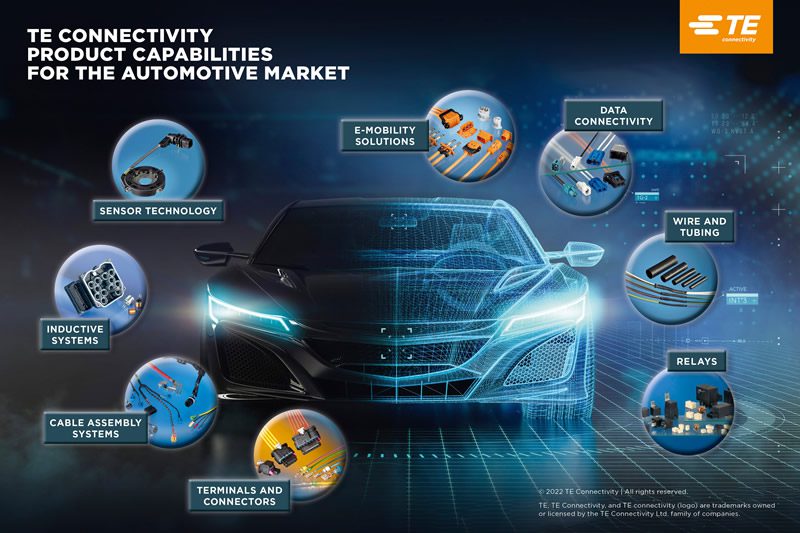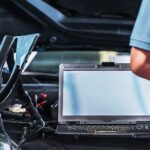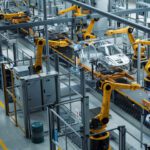Software-Defined Vehicles: A New Era of Vehicle Customization
In April, automotive and component manufacturers, suppliers, and the media flocked to China to participate in Shanghai Auto Show, the world’s largest car show. This year’s theme was “Embracing the New Era of the Automotive Industry,” and the show did not disappoint. Manufacturers showcased 1,500 state-of-the-art vehicles across 12 exhibit halls.

What may come somewhat as a surprise, however, is how fast Chinese OEMs have driven electric vehicle innovation, to the point that they are now outpacing multi-national automotive producers in the development and sale of new energy vehicles (NEVs), which include battery electric vehicles (BEV), plug-in hybrid electric vehicles (PHEV), and fuel cell electric vehicles (FCEV).
A report from Automobility Ltd points out that China isn’t just the largest auto market in the world, comprising 40% of all passenger vehicle sales in 2022. It’s also on track to become the world’s largest car exporter by the end of 2023. How did China race ahead so far and so fast? In China, as of April 2023, NEVs made up 26.6% of the market, and their increasing popularity globally is providing Chinese OEMs with an advantage. But that’s not all. NEV architectures allow the car to essentially become a computer on wheels.
Because of this, Chinese OEMs have been able to compete on other technologies rather than on horsepower, acceleration, or shiny chrome. And with NEVs increasingly offering new advanced safety features, autonomous driving functionality, internet access, futuristic infotainment options, and more, they are essentially evolving into an entirely new category – that of software-defined vehicles (SDVs).
Imagine cars where consumers can add new features by subscribing to them on customized apps. Want heated seats, but only in the winter? SDV cars can deliver that capability and level of user-driven customization. These cars exist today but will add even more features and become mainstream in the future.

Creating Software-Defined Vehicles of the Future – Today
With China and other NEV companies pushing the market forward, legacy auto manufacturers must rise to the challenge of delivering an innovative customer experience with SDVs. So, what does this propulsive drive to innovate mean for car and component manufacturers now?
- Auto manufacturers will embrace simplicity: Today, many cars are highly customized, with consumers selecting the final features. This introduces incredible complexity into the supply chain.
With SDVs, hardware complexity will be reduced, as many options will be enabled by software. Manufacturers will increasingly offer three levels of customization: budget, mid-level, and luxury. Mid-level cars will have a moderate level of software and application-driven services, whereas luxury cars will have all options available. Buyers will be able to select services upfront but also add them on demand.
This shift will increase the content in cars, necessitating more semiconductors, connectors, and wiring. The physical layer in the car will contain all necessary options potentially switched on through the SDV feature. As a result, electrical distribution systems will need a higher grade of standardized parts, which will cost more but also unlock incremental revenues through new subscription streams.
The drive to offer more connectivity benefits component manufacturers who offer high-voltage, high-current interconnection systems, auxiliary systems, and more. As auto manufacturers require systems that support software, they are replacing fuse boxes with semiconductors that can manage circuits and control them more precisely. Designers gain the flexibility to set up systems efficiently, choosing to deliver more power on one circuit or using a smaller circuit-size requirement to deliver the same amount of power.
- Architectures will be standardized: One reason Chinese NEV manufacturers are so agile is that they own their own technology. Today, legacy auto manufacturers work with multiple suppliers to develop distributed electronics, independent HVAC systems, anti-lock brakes, and other systems. That model doesn’t work with SDVs, which centralize systems. As a result, original equipment manufacturers (OEMs) will control most of the software in the future, enabling greater standardization and streamlined distribution of the physical layer.
Auto manufacturers will use centralized computing, enabling them to distribute wire and connections in a logical way and save weight. Instead of distributing power from part of a wire harness throughout a car, they’ll be able to simplify architectures by bundling parts into units and using more point-to-point connections that can be summarized to space-saving jumper cables. Connector manufacturers will benefit, too, as they’ll be able to create more standardized parts in larger volumes, boosting production efficiency and financial returns.
- Electronics and other components will get modularized: In keeping with the drive to simplify, auto manufacturers will push OEMs to modularize their components to free up space for other solutions. At a recent EV demonstration, I witnessed a Chinese manufacturer demonstrate an 8:1 EV power electronics module. That means companies that supply connectivity will need to work closely with electronics module manufacturers to evolve their solutions to fit the latest designs.
- Robotics-driven assembly continues to improve: Auto manufacturers use a million robots worldwide – one-third of all industry use – to automate many production processes. Humans still make and verify connections, assemble harnesses, and install them in cars.This will change. As harnesses get smaller and weight decreases up to 30%, robots will be able to install them into cars at higher insertion force limits than humans and without fatiguing. In addition, because robots are so reliable, connectors will likely evolve and lose their secondary lock protection. With more automated processes and well-engineered, simplified connections among modules, manufacturers will be able to speed up production, driving revenues and avoiding lost sales.
- Data scientists will work side-by-side with designers: Auto manufacturing has long been driven by creativity, with design stars bringing new models to market to drive consumer spending. Now, the industry will hire more data scientists to develop AI and machine learning models to enable more advanced systems. Designers, too, will become more driven by data and technology. They’ll likely use generative AI to streamline the design of standard cars and leverage robust consumer, market, firm, and AI data insights to drive the development of higher-end designs.
Data Connectivity Remains the Critical Path Toward Innovation
Even with all of the innovation in terms of design, manufacturing, and architecture, the proverbial “long pole in the tent” – or the critical path to enable the potential of an all-new driver and passenger experience – lies in data connectivity.
For our computers, smart phones, smart televisions, and other software-enabled devices, we have come to take for granted the ubiquitous internet access and connectivity that make those devices so valuable. While the same goes for SDVs, delivering the necessary connectivity is much more complex than it is for other devices.
The first difference is in the scale of the information that needs to be processed by the vehicle. While usage varies around the world, the average smartphone consumes between .5 and 1GB of data per day. An autonomous vehicle, however, produces more than 30TB of data per day. To put it in perspective, that is more than twice the amount of data that is produced by all 500 million users of “X” (formerly Twitter) on a daily basis.
Next is the speed required to process that data and send the necessary commands throughout the vehicle, as well as the urgency of that transfer. A split-second delay in connecting to a Tik Tok video on your phone is less than noticeable and hardly an inconvenience. However, in a vehicle, even a nanosecond delay in the delivery of data from a sensor to a braking system can mean the difference between a comfortable stop and a potential accident.
SDVs require a significantly more robust data connectivity network, one capable of handling an immense volume of data, and delivering it at incredible speeds, reliably, and in harsh operating environments.
Innovation Will Create More Opportunities for Everyone
Overall, the race to develop Software-Defined Vehicles offers market participants the opportunity to develop new systems, meet customer demands for standardization and modularization, and leverage economies of scale to boost revenues and profitability. For auto manufacturers, it also offers the opportunity to turn a one-time vehicle sale into an ongoing engagement and monetization model, where they can make it easy for consumers to unlock and pay for new services. And for manufacturers of component and connectivity systems, demand will only grow as cars continue to digitize.
OEMs and component manufacturers can make this shift by working collaboratively with auto manufacturers and other ecosystem partners, appealing to new consumer tastes, and harmonizing operations for greater efficiency. By so doing, they can create transformation-ready organizations that evolve at the speed of change.
Learn more about TE Connectivity’s solutions for SDV technologies.
By Ruediger Ostermann, Vice President and Chief Technology Officer for TE Connectivity’s Global Automotive Business
Like this article? Check out our other articles on EVs and HEVs, Manufacturing and Connected Vehicles, our Automotive Market Page, and our 2023 Article Archive.
Subscribe to our weekly e-newsletters, follow us on LinkedIn, Twitter, and Facebook, and check out our eBook archives for more applicable, expert-informed connectivity content.





